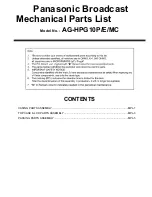
TRUST 532AV POWER VIDEO
9
U K
See figure 1.
1.
Turn the camera on (see chapter 4.4).
2.
Fold the LCD screen open.
3.
If you use the viewfinder, hold it in front of you 20 to 40 cm from your eyes.
The viewfinder has been designed to be used this way because there is no
space for your face close to the camera.
4.
Focus the object to be photographed. If necessary, use the macro setting
(see chapter 4.6.4).
5.
Hold the camera still.
6.
Press the exposure button (1). The photograph will now be taken. The LED
indicator (above the video button) will be lit.
7.
Wait until the camera is ready. The camera is ready to take another
photograph when a noise is heard and the LED is turned off.
Note
:
Keep the glass of the lens clean. Use a cotton bud to clean the lens.
If necessary, use special cleaning liquid for camera lenses. Do not
use a different cleaning product.
Note
:
All the recordings in the camera’s internal memory are deleted when
the batteries are replaced or when they become empty. Transfer the
photographs to your computer before replacing the batteries or use a
CF card. A CF card saves recordings even without batteries.
Tip
:
The quality of the photograph depends on the surrounding light. More
light will result in a better picture.
Tip
:
The number of photographs that can be taken depends on the
number of details of the object to be photographed. The specifications
are an approximation.
Tip:
The image viewed through the viewfinder may be slightly different to
what is recorded through the lens.
Resolution/photographs
CF memory card
High
Low
None
11
88
16 MB
18
150
32 MB
36
352
64 MB
74
585
128 MB
140
1100
256 MB
270
2100
512 MB
525
2400
Table 8: Maximum number of photos. This number can be doubled by changing
the quality to ‘Low’. If the CF card is full, it can be removed and
recordings can then be saved in the internal memory.
4.7.2
Taking photographs using the automatic exposure function
Also see figures 1 and 2. You can take a photograph of yourself using the automatic
exposure function. The camera has a built-in mirror on the front (4, figure 1) which is
used to see approximately what will be photographed. Another use for this mirror is
to make a recording in poor lighting without affecting the sharpness.
1.
Place the camera on the stand.
2.
Turn the camera on (see chapter 4.4).










































